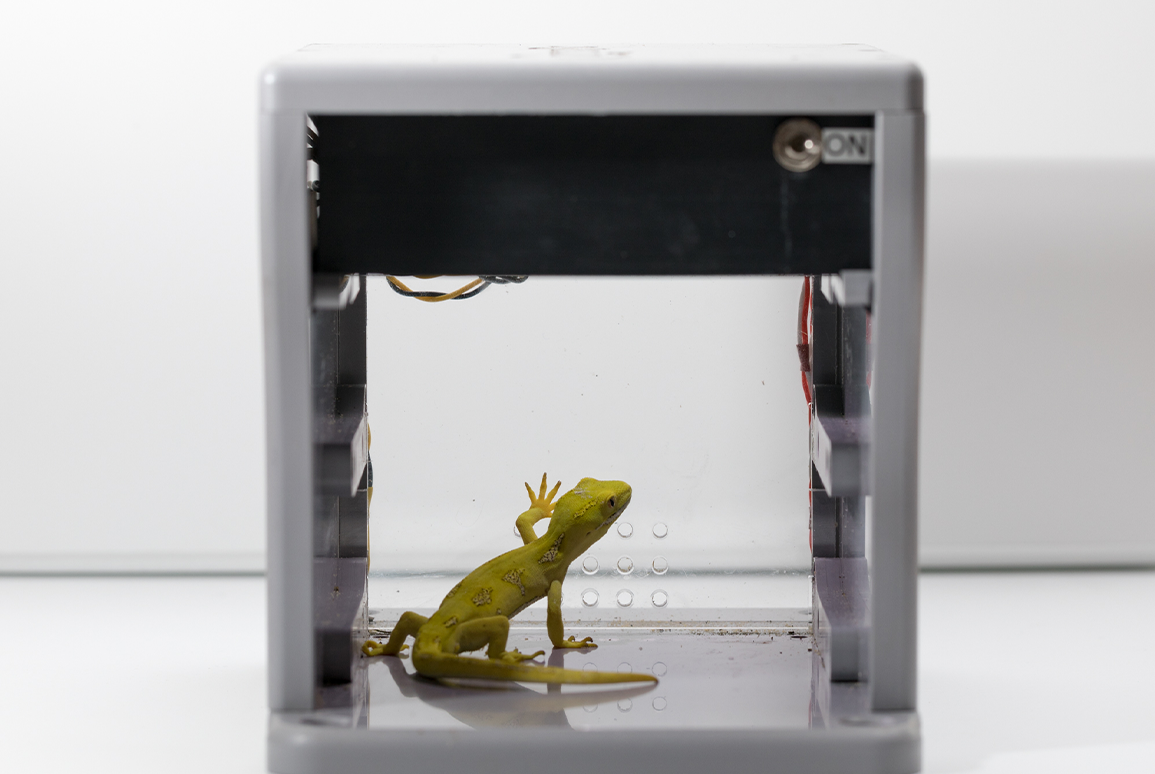Our ecologists present at the World Congress of Herpetology
17 December 2019
While reptiles and amphibians are among the most numerous terrestrial vertebrates on the planet, they are also the most threatened.

The mission of the World Congress of Herpetology (WCH) is to promote herpetological research, education and conservation, by facilitating communication between individuals, societies and other organisations engaged in the study of amphibians and reptiles.
Under the conference topic "New & Innovative Technologies for Herpetological Research" Katherine Muchna is presenting CritterPic®: A new tool for passive detection and photography of herpetofauna.
"CritterPic® is an animal detection system," says Kat. "It's a long-life image capture device, which automatically takes close-up high-quality pictures of a full range of small to medium-sized invertebrates, lizards and mammals."
CritterPic® features greatly reduced false trigger rates compared to traditional camera traps, is fully automated, and can upload data in real-time to the Cloud over the cellular network, providing instant reporting of interactions.
Kat's presentation will describe the results of field trials of CritterPic® alongside traditional survey methods at a number of sites.
Graduate ecologist Emily Hotham studied the impact of disturbed habitat on the Archey’s frog (Leiopelma archeyi) micro-habitat use for her Master's thesis, and is presenting Habitat use by Leiopelma archeyi in disturbed and undisturbed sites on the Coromandel Peninsula, Aotearoa.
The smallest of New Zealand frogs, the Archey’s frog population faces threats from human disturbance, habitat loss, mammalian predators, and disease; all factors that have contributed to their Critically Endangered status.
Emily examined key habitat features and vegetation types that indicate likely frog presence and how frog populations respond to historic and current disturbance (i.e. changes in habitat availability). She says the information gathered could be used to help make informed decisions regarding habitat clearance, disturbance and management in areas known to have suitable vegetation to sustain populations of Archey’s frog.
"One of the biggest issues is the general lack of information about how frogs behave and use their habitat. It is really important for us to accurately assess where frogs might be, and to know how best manage disturbed habitats to provide the best outcome for this Critically Endangered species,” says Emily.
Ecologist Samantha King's poster: Genetic and phenotypic variation used to identify populations of endangered green gecko (Naultinus) is based on MSc research carried out in 2017, attempting to determine the presence of a hybrid zone between two species of endangered South Island green gecko — West Coast green gecko (Naultinus tuberculatus); and starred gecko (N. stellatus).
"To determine if they were coming into contact in an area, I used techniques to measure differences between both species," Sam explains. "These included measuring body size, shape, and pattern; and the genetic structure of different populations, and comparing both of these. I also studied habitats that the geckos were found in."
Sam didn’t find a hybrid zone. However, she determined that there are high levels of variation in body size shape and colour within and between species, and found diagnostic tools (such as mouth and tongue colour) that define these species groups when they are encountered in the field.
"My research helps conservation practitioners to implement best practice techniques for green gecko conservation management by determining ecotypes and habitat use, population variance, which can prevent the further decline of both genetic variation and risk to species."
In addition to the three presenters, ecologist Amanda Healy is attending the conference.
Technical Leader for Sciences, Dr Leigh Bull says, “The world’s top herpetologists are expected at this event, and we are very proud to have three Boffa Miskell ecologists presenting in Dunedin. This is a particularly significant opportunity for Katherine to introduce CritterPic® to a global audience, and we’re looking forward to the response from the international attendees.
"It’s also very impressive that Emily Hotham and Samantha King are presenting in this forum. Both young women have recently completed their Master's Theses, and to have their work included in the World Congress of Herpetology is a notable achievement.”

